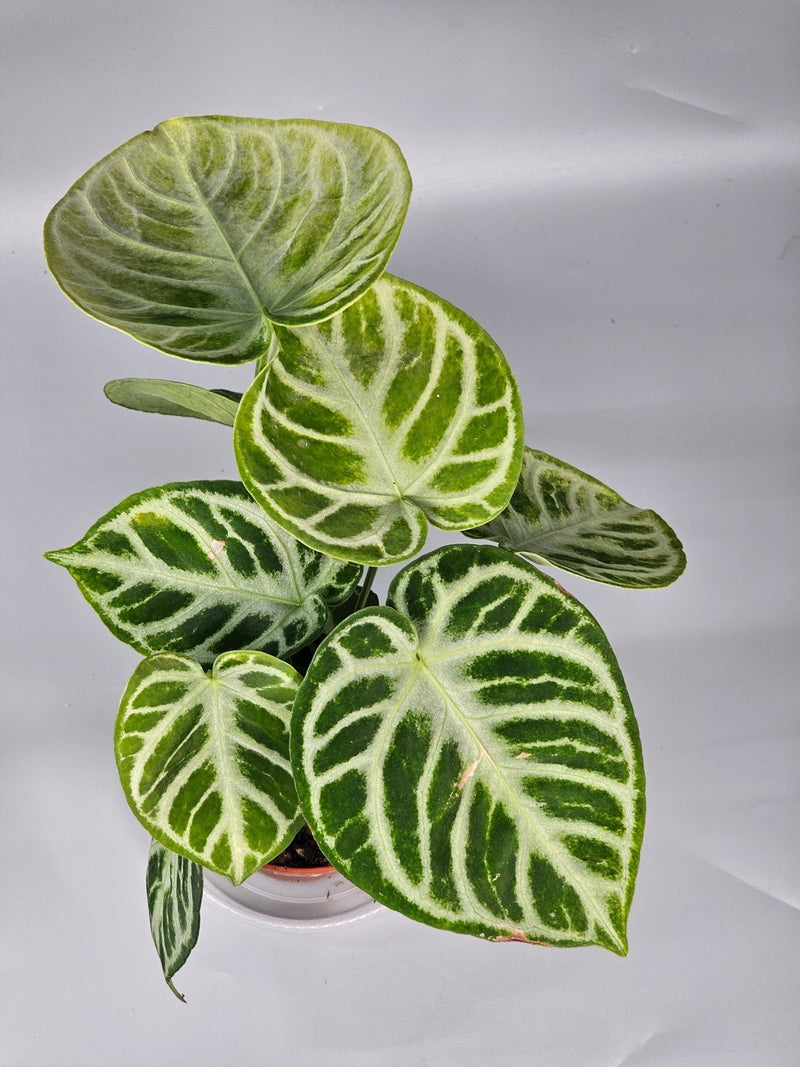
by Odd Leaf
Buyer's Guide: Choosing the Right Rare Anthurium for Your Home
Buyer's Guide: Choosing the Right Rare Anthurium for Your Home Welcome to the enchanting world of rare houseplants, where the allure of the unique Anthurium species captivates plant enthusiasts and decorators alike. If you're keen to add a touch of exotic flair to your indoor garden with a rare Anthurium, you're in just the right place. This guide will walk you through selecting the perfect Anthurium for your home, offering practical tips and insights to ensure your green investment thrives. Understanding Anthuriums Anthuriums, often known as 'Flamingo Flowers' or 'Laceleaf', are beloved for their spectacular foliage and vibrant floral spathes. Originating from tropical rainforests in Central and South America, these plants require conditions similar to their native habitats to flourish indoors. Before diving into the different types available, let's understand what makes Anthuriums special among rare houseplants: Visual Appeal: With glossy leaves and often bright, heart-shaped blooms, Anthuriums add a striking visual element to any room. Variety: The genus encompasses a wide range of species and hybrids, each with unique characteristics in terms of leaf shape, color, and size. Air Purification: Like many houseplants, Anthuriums can help purify the air, making your home fresher and more inviting. Popular Rare Anthurium Varieties When choosing a rare Anthurium, consider these popular varieties which are known for their distinctive beauty and relatively straightforward care: Anthurium clarinervium - Known for its heart-shaped, velvety leaves with striking white venation. Anthurium warocqueanum (Queen Anthurium) - Famous for its long, dark green leaves that can grow up to a meter in length. Anthurium veitchii (King Anthurium) - This variety boasts long, pendulous leaves with a ribbed texture. For more detailed care instructions on these varieties, you might find our article on Anthurium clarinervium care helpful. Choosing the Right Environment To ensure your Anthurium thrives, replicate its natural humid, warm environment as closely as possible: Light: Provide bright, indirect sunlight. Direct sun can scorch the leaves, while too little light can reduce flowering. Humidity: Aim for 60-80% humidity. Consider using a humidifier or placing your plant in a well-lit bathroom if the air in your home is dry. Temperature: Keep the temperature between 18°C and 27°C. Avoid draughty areas or sudden temperature changes. Plant Care Tips Caring for rare Anthuriums involves more than just regular watering and feeding; it's about understanding their unique needs: Watering: Water your Anthurium when the top inch of soil feels dry to the touch. Ensure good drainage to prevent root rot. Feeding: Feed every six to eight weeks during the growing season with a balanced, water-soluble fertilizer diluted to half the recommended strength. Pruning and Maintenance: Regularly remove any yellowing or dead leaves to encourage new growth and maintain the plant’s appearance. Common Questions About Rare Anthuriums FAQ: How often should I repot my Anthurium? Repot every two to three years or when the roots outgrow the current pot. Spring is the best time for repotting to minimize stress on the plant. Are Anthuriums toxic to pets? Yes, Anthuriums are toxic if ingested by pets. They contain calcium oxalate crystals which can irritate the mouth and digestive system. Why are my Anthurium's leaves turning yellow? This could be due to overwatering, low humidity, or nutrient deficiency. Adjust your care regimen accordingly, and consult our troubleshooting guide here. Where to Buy Rare Anthuriums Ready to start your journey with a rare Anthurium? Visit our Anthurium collection to explore the varieties available. For more exotic options, browse our Rare Collection. Choosing the right rare Anthurium for your home can transform your space into a vibrant, tropical paradise. With the right care and environment, these stunning plants can provide years of beauty and enjoyment. Welcome to the lush world of rare houseplants!
